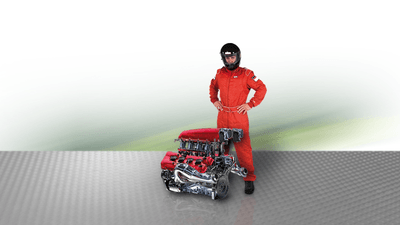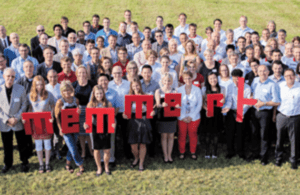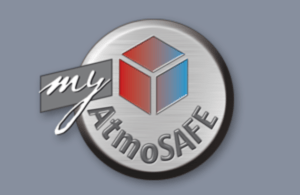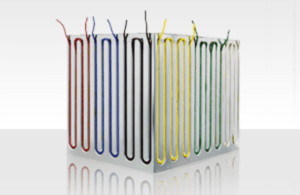Fit for TQM and Customer Audits
Equipment qualification in the context of quality management or validation is an essential pre-requirement for a large number of companies in deciding on a specific supplier. Apart from the calibration certificate, which is included by default, Memmert also issues IQ/OQ certificates on request. To support the customers’ own IQ/OQ certification, we can offer IQ/OQ documentation.
Installation Qualification IQ
The Installation Qualification IQ is the documented proof that facilities and equipment have been delivered and installed in accordance with the requirements and statutory safety regulations stipulated in the design qualification. The documentation for an Installation Qualification normally consists of:
IQ test plan:Contains detailed information of the tests to be performed on the respective equipment in the context of the Installation Qualification.
IQ report: After completion of the Installation Qualification IQ, the results are summarised, evaluated and compiled in an IQ report. All deviations, as well as measures taken to eliminate these, are documented. After the deviations have been eliminated, these must be tested again, documented and evaluated in a new IQ report.
The extent of the Installation Qualification IQ
- Stocktaking of the components delivered, together with a check of the order documents
- Testing of manufacturer documentation for conformity (rating plate, delivery note)
- Testing of operator documentation for conformity (operating instructions)
- Testing of assembly and ensuring installation was performed correctly, based on various plans (insofar as is necessary)
- Documented evidence of operating personnel being instructed on operating equipment
- Documentation of test data for the initial inspection in accordance with DIN VDE 0700 Part 1 and EN 60335-3
After a successfully completed Installation Qualification IQ, this is released by the signatures in the qualification report of the persons responsible in the qualification team, countersigned by the user of the equipment, thus completing the process, or releasing the equipment for the next stage of qualification.
Operation Qualification OQ
The Operation Qualification OQ is a test process that evaluates the correct functioning of a facility or an appliance. During the Operation Qualification OQ, all items specified in the test plan are processed and documented in writing, to ensure that the system functions in accordance with specifications. The Operation Qualification OQ may only be performed after a successfully completed Installation Qualification IQ. The (successfully) performed Operation Qualification OQ is a prerequisite for the technical acceptance of a facility or appliance. The documentation for an Operation Qualification normally consists of:
OQ test plan: Contains detailed information of the tests to be performed on the respective equipment in the context of the Operation Qualification OQ This test plan contains detailed specifications on the course of the test itself.
OQ report: After completion of the Operation Qualification OQ, the results are summarised, evaluated and compiled in an OQ report. All deviations, as well as measures taken to eliminate these, are documented. After the deviations have been eliminated, these must be tested again, documented and evaluated in a new OQ report.
The extent of the Operation Qualification OQ
The Operation Qualification OQ consists of the identification and inspection of the alarm, control and switch functions that have an influence on quality:
- Inspection of the display units and signal LEDs
- Inspection of temperature control and control fluctuations
- Inspection of the over/undertemperature protection alarm systems
- Inspection of the pressure/vacuum control (if available)
- Inspection of the CO2 control (if available)
- Inspection of the humidity measurement and control (if available)
- Inspection of the fan speed control (if available)
- Inspection of the servo motor air flap control (if available)
- Inspection of the card reader function (if available)
- Inspection of the temperature distribution, based on DIN 12880: 2007-05
After a successfully completed Operation Qualification OQ, this is released by the signatures in the qualification report of the persons responsible in the qualification team, countersigned by the user of the equipment, thus completing the process, or releasing the equipment for use.
Performance Qualification PQ
Performance qualification (PQ) of laboratory equipment is an important component of the validation of the entire production process over a certain period of time and for a specific product. Its purpose is to verify and document that the appliances and systems are working reproducibly within the entire specified working range and limits. The appliances and systems are not inspected individually but always as part of the overall or partial process. Even though PQ usually comprises OQ tests under process conditions (e.g. for hot air sterilisers with load), a detailed test plan has to be created based on a comprehensive process description before the validation process is started in any case.
Performance qualification (PQ) comprises:
- Documentation under process conditions that the appliance or the entire process with the product produces the expected defined results.
- The extent of the PQ can result from the requirements of the operator (requirements specification) or from normative or legal requirements
- Physical tests proving that the specified limits regarding homogeneity and stability are adhered to with the product.
- Documentation of the procedure and results in the qualification report (with detailed procedure description and, if applicable, picture evidence)
- VALIDATION through several repetitions, reproduction of the processes (mostly three times in pharmaceutical and medical technology)
Both the preparation time for a performance qualification (PQ) and the actual validation are very time consuming. In case you plan to perform a PQ with the help of Memmert, we would like to ask you to contact us soon. Please contact our quality assurance department at info@memmert.be









